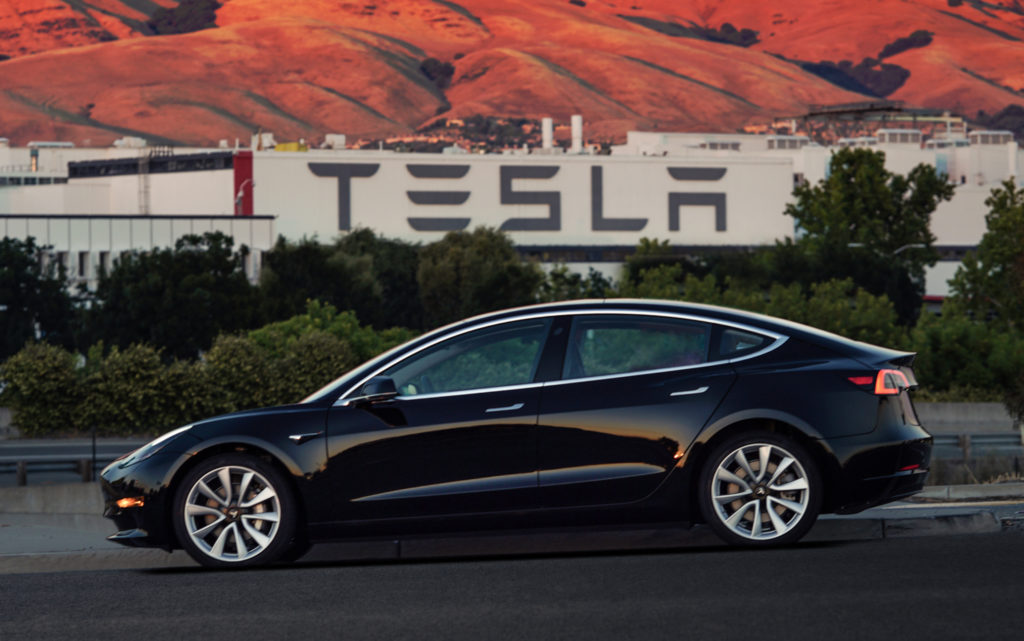
First-responder guides show some ultra-high-strength steel locations in Tesla Model 3
By onBusiness Practices | Education | Market Trends | Repair Operations | Technology
While they’re certainly not repair manuals — quite the opposite, actually — shops curious to learn more about the structure and technology of the new Tesla Model 3 as well as prior Teslas might want to check out the company’s first-responder guides.
Not surprisingly given its lower price and Tesla’s mass-market intentions, the Model 3 relies more heavily on higher-strength steel rather than more expensive aluminum to protect occupants but preserve battery range, according to the first responder information.
A diagram shows the vehicle reinforced with what appears to be ultra-high-strength steels along the entire “door ring” and the rest of the roof and sill rails extending back the length of the vehicle.
The doors also appear to have two high-strength steel intrusion beams each rather than the single one seen in other vehicles and even other Teslas.
The guides are designed to help first responders cut safely through logical areas to extricate passengers in an emergency, so the partial diagrams shouldn’t be assumed to be the only high- or ultra-high-strength steel on the vehicles. For example, there might not be any reason to show structural components on the ends of the vehicle if firefighters are just going to go right for the passenger cage anyway.
Since Tesla restricts parts and repair procedures, an uncertified shop can’t and shouldn’t work on those structural components, but the diagrams still can help contribute to one’s understanding of overall materials trends. And your understanding of Teslas, should your company decide to pursue certification ahead of a potential Model 3 repair demand in the coming years.

The cars are priced at $35,000 and are eligible for tax credits, which make them much more feasible for a typical consumer than a Model S or X. While its true penetration is unknown — the first deliveries started in July — pre-orders suggest Model 3 could post monster, six-digit sales globally and potentially make a real impact in the vehicle mix of certain collision repair markets.
“Model 3 production has started with low volumes but will grow exponentially until we achieve full production,” Tesla wrote on the Model 3’s website. “A similar production ramp will follow with each new available option.”
Even though the Models S and X are comprised of more aluminum, Tesla’s first-responder diagrams do reveal the presence of what appears to be higher-strength steel reinforcements as well on the 3’s predecessors.
“The A-pillars and B-pillars are built with boron steel,” Tesla wrote about the Model X. “The B-pillar is additionally reinforced with a dual-phase 980 steel pipe that runs from the roof rail to just below the latch striker.”
Other reinforcements can be seen as well in the SUV, including within the doors.
The 2016-onward version of the Model S has ultra-high-strength steel B-pillars connected to a UHSS roof crossmember, and it also has high-strength steel door intrusion beams.
The guides also offer at least a partial look at some of the other Tesla features for those curious about the vehicles; of those, the most noteworthy might be the warnings about electric vehicle safety — a consideration that repairers will need to take to heart if electrification gains more ground. Again, first responders are going to be approaching vehicles completely differently than body shops, but the documents at least raise a little more awareness of the need for EV best practices.
More information:
Tesla First Responders website
Images:
This image shows the first-deliveries event for the Tesla Model 3 in summer 2017. (Provided by Tesla)
The first production Tesla Model 3 is shown. (Provided by Tesla)
